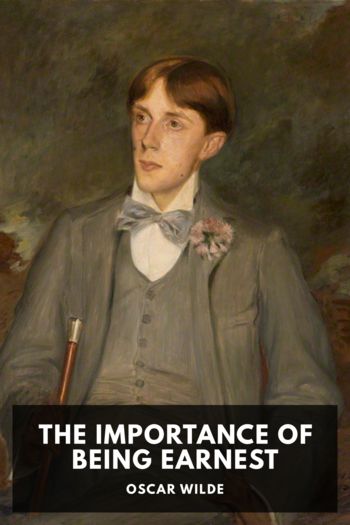On Creative Writing, Linda A. Lavid [read ebook pdf .txt] 📗

- Author: Linda A. Lavid
- Performer: -
Book online «On Creative Writing, Linda A. Lavid [read ebook pdf .txt] 📗». Author Linda A. Lavid
Question: Problem area:
Were you confused at any point? Something was either left out, glossed over, or too many things were happening at once. An overabundance of characters. Cause and effect problems.
Did something not make sense? Tangential events strayed from the story goal. Not enough or unclear information was given to the reader. Facts were incorrect. Illogical motivation.
Were you bored? Conflict was not developed. Emotional content was flat. Forward movement stalled. Too many irrelevant details. Too many flashbacks. Slow start. Boring characters.
Was something missing? Underdeveloped or unresolved storyline and subplots. Lack of vividness.
A change, such as adding or deleting a scene, can cause a domino effect. That’s why it’s so important to have a working outline from the outset. Still, whatever is broken can be fixed. Relax. Take each problem and work it out.
Line by Line Editing. Line by line editing is where you read each sentence and evaluate its efficacy and proper use of the English language. Line by line editing is the time to sit down, get comfortable and read each and every sentence carefully. Two reference books to have on hand are a dictionary and William Strunk’s The Elements of Style.
Below you’ll find a line by line edit I did on the first paragraph of this book. A discussion follows of why I made the changes.
Before line by line: I’m standing before you, a decidedly middle-aged woman, round, doughy and blinking through smudged glasses. It’s six p.m. We are in a VFW Post drinking bitter coffee from Styrofoam cups. I look worried and I am. It’s my turn to disclose. All eyes, expectant, are on me. I clear my throat, swallow and say, “My name is Linda …” I pause, unsure if I should proceed. What will you think? That I’m a fool, a loser? I want to run, but I’ve come this far. Instead, I steady myself and blurt out the words, “… and I’m self-published.”
After line by line: Before you I stand,1 a decidedly middle-aged woman, round, doughy and blinking through smudged glasses. It’s six p.m. We’re2 in a VFW Post drinking bitter coffee from Styrofoam cups. I’m worried.3 It’s my turn to disclose. All eyes, expectant, are on me. I clear my throat, swallow, then4 say, “My name is Linda — “5 I stop cold.6 What will you think? That I’m a fool, a loser? I want to run, but I’ve come this far. My confession tumbles out.7 “And I’m self-published.” 8
Reasoning:
1. In the first sentence, a decidedly middle-aged woman, follows the word you. One could assume then that you are a decidedly middle-aged woman. To correct this, I rearranged the starting prepositional phrase so that the qualifying phrase is clearly about me.
2. We are changed to We’re. A conversation style sets an intimate tone.
3. I look worried and I am changed to I’m worried. First person faux pas. How can I look at myself without a mirror?
4. and changed to then. Clearer progression. Less simultaneous action.
5. “My name is Linda …” changed to “My name is Linda —” Ellipsis denote a trailing off, an em-dash an abrupt interruption. I made this change after I made a change in the following sentence.
6. I pause, unsure if I should proceed, changed to I stop cold. More punch, action, decisiveness.
7. Instead, I steady myself and blurt out the words, changed to My confession tumbles out. Cleaner and crisper.
8.”… and I’m self-published.” changed to “And I’m self-published.” Ellipsis denote a trailing off and are used at the end of a line of dialogue. Misuse of punctuation.
As illustrated, every sentence can be a minefield. The above changes were made after I’d tweaked the paragraph many times. Line by line editing is subjective and I suspect no two writers or editors would make the same changes. Still, there are many common mistakes:
- Redundant nouns, pronouns, verbs, and phrases.
- Overuse of passive voice construction: was, were.
- Overuse of adverbs (ly verb), infinitives (to+verb) and present participles (ing verb)
- Cliches.
- Complicated tense as in past perfect, had to, have had to, had to have been.
- Metaphors/similes that miss the mark.
- Simultaneous action. As/While construction.
- Profanity.
- Cause and effect problems.
- Continuity issues, i.e., Jimmie in one place, Jimmy in another.
- Weird sentences that, quite frankly, make no sense.
Copyediting. Copyediting is more trawling for errant punctuation and the minutiae of misspellings, misplaced, misused or just plain missing words. There are many tools in your word processing program to help. Begin with spelling and grammar checkers. While these tools are not foolproof, they will always find pesky little typos and you may even learn a thing or two: Foreign words are italicized. Brand names are capitalized. Numerals inside dialogue are always spelled out except for years.
Another godsend is the Find and Replace function. This function searches any word. For example, if you find that your writing has an overabundance of a verb, looked, you can begin a search and replace them with other verbs. Besides redundancies, here’s a list of some words that I often check to see if they’re used properly:
-your, you’re
-their, there, they’re
-lie, lay (present and past tense of to lie)
-lay, laid (present and past tense of to lay)
-that, which (see The Elements of Style)
-farther (distance), further (time or quantity) The boy threw the ball farther.
You can even search keystrokes. For example: . ” (period followed by an extra space and end quote).
After the trials of missing a bevy of typos and putting out a second edition of my first novel, I did come upon one helpful technique and a computer program that have since proven very helpful. First, read the story backwards. Yes, it sounds overwhelming but it’s quite effective. Reading copy from the last word to the first allows you to focus on specific words, phrases, sentences rather than be besotted by overly read text where blind spots abound. Second, there’s a program called Natural Readers that can be downloaded for free from www.naturalreaders.com. This program reads text back to you and is very easy to use. Once downloaded and installed, you simply highlight the text from your document and paste into the Natural Readers text box. With one click, a computerized male voice reads the text aloud as you follow what’s written. Great for finding missing words, a propensity of mine.
Author’s Note
Such is my take on creative writing. Please understand this is not a definitive book on writing fiction since the act of writing is a creative, expansive process. Still, I hope you have found On Creative Writing helpful. Please feel free to email me at linda@lindalavid.com. I’d love to hear from you. For ongoing books, tips, links, and updates on writing and publishing, please visit my website, lindalavid.com.
Seventeen years ago I had a dream - to write the great American novel. That dream remains, but another came true. I am a writer.
Appendix I
Guidelines for a Writer’s Group
- Sign in sheet. Depending on the size of the group, order preference will be given to those who haven’t read the prior session.
- A writer will have a set amount of time, i.e., fifteen minutes, to present their unpublished work. Pieces can be read aloud or silently. Members are encouraged to write comments on handouts. All handouts will be returned to the author unless otherwise arranged.
- Depending on the genre of writing, consider the following areas to critique:
Fiction: Opening, Conflict, Plot, Setting, Characterization, Dialogue, Point of View, Showing, Telling, Format, Grammar, Spelling, Style.
Poetry: Subject, Title, Form, Structure, Rhyme, Meter, Layout, Line Breaks, Rhythm, Cliches, Imagery, Vocabulary, Adjectives, Adverbs, Showing, Telling.
Non-Fiction: Structure, Argument, Topic, Readability, Illustrations, Anecdotes, Accuracy, References, Grammar, Spelling, Title.
- Critiques of work will follow. All members are encouraged to participate, but can also PASS if he or she has no comment.
- During critiquing, the critiquing member has the floor. Critiques should not be more than five minutes.
- After the critiques, the author responds and general discussion follows.





Comments (0)